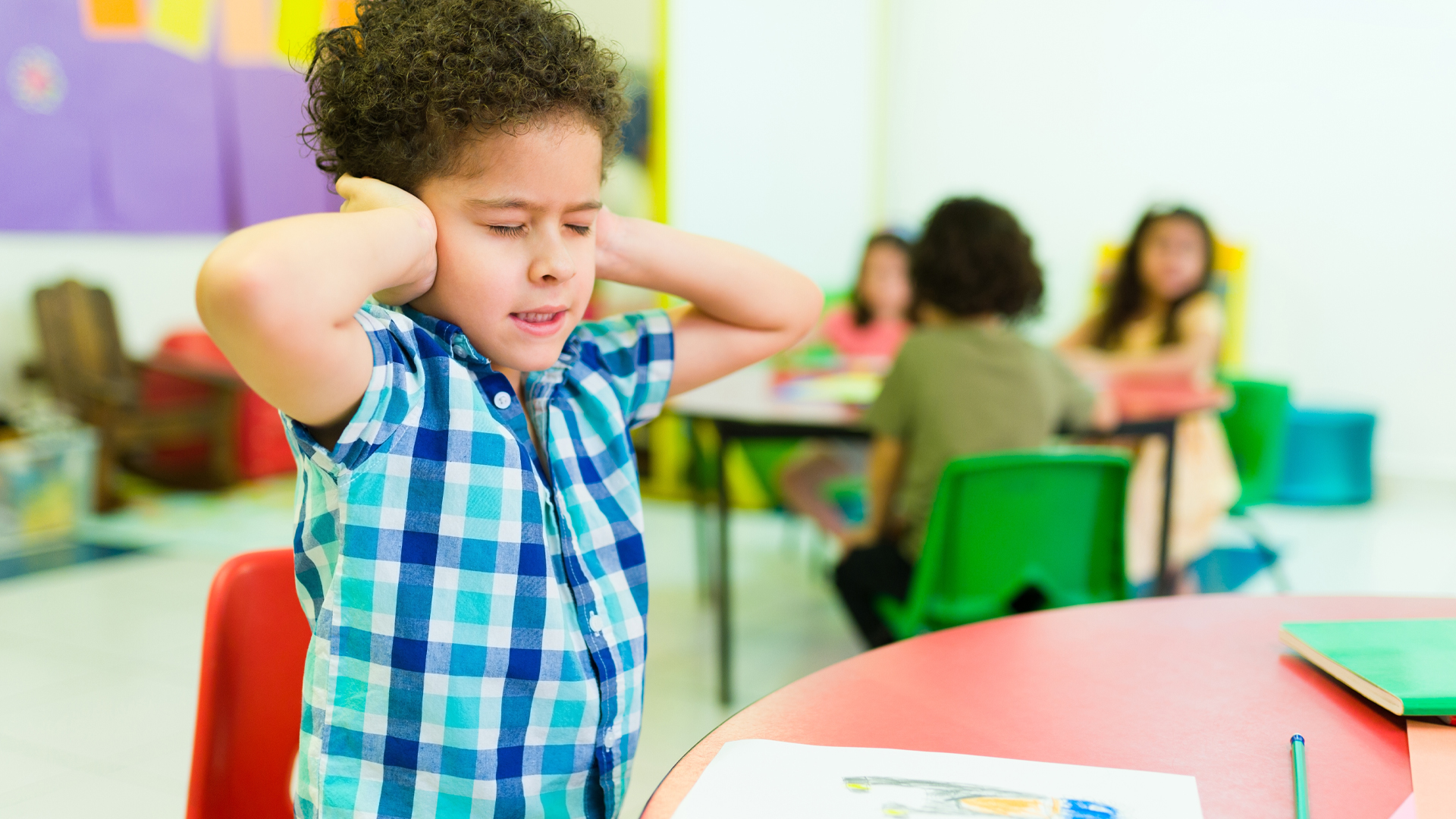
Murmuring at the back of the classroom used to be considered a problem for teachers. Today. moving chairs, blurting out, walking around, jostling, checking cellphones, talking back, and walking in late have been normalized. By most accounts, it’s worse since the prolonged pandemic school closures and the emergence of the “new normal” in kindergarten to Grade 12 education.
U.K. teacher-researcher Tom Bennett was one of the first to put his finger on the scourge of noise, interruption and disruption confronting front-line teachers, particularly those new to the profession. Speaking in his capacity as the U.K. government’s school behaviour advisor, Bennett aptly described the constant din of low-level disruption as “kryptonite to any lesson.”
The problem is two-fold: regular classrooms are noisier and more unsettled than ever, and most teachers in Canada and the United States enter the classroom with little preparation in one vitally important domain – classroom management. That’s most peculiar because winning over and managing your class always ranks among the top-reported concerns of novice teachers.
Long before the COVID-19 school upheaval, teachers in the North American K-12 education system consistently reported dealing with student behaviour as among the most challenging issues they faced on a daily basis. Most of the ongoing turmoil and instability is attributable to what is now termed ongoing low-level disruptions.
The Functionary: Kathryn May’s newsletter on the public service
While stories about school violence, drugs and weapons attract the most public attention, classroom teachers in regular programs and special-education settings prior to the pandemic consistently reported that student disengagement (for example, off-task behaviour) and regular class disruptions are the most common misbehaviours experienced on a daily basis. In American public schools, these common behaviours consume more than 80 per cent of teachers’ instructional time.
Noisy, disrupted classrooms
The origins and scope of excessive classroom noise and disruptions remain largely undiagnosed and understudied in our provincial school systems. According to a global student survey conducted by the OECD as part of the Program of International Student Assessment (PISA) released in 2020, one-in-five 15-year-old Canadian students reported that learning time was lost to noise, distractions and disorder – so much so that these detracted from learning in class. This problem worsened from 2015 to 2020 and, based upon anecdotal evidence, may even have grown since the pandemic school disruption.
Canada’s record in this regard is poor. This country ranked 60th out of 77 participating nations and educational districts in the OECD 2018 index of disciplinary climate. The index is based on an international survey of 600,000 15-year-old students to capture their views about the state of student discipline in their classes. A relatively high proportion of Canadian students say the teacher is not listened to, and it takes a long time for the class to settle down. In addition, students regularly skip school and/or report late to class.
An unsustainable student behaviour approach
Over the past 15 years, student behaviour has taken a back seat to engaging students and seeing “noise” as productive in classrooms. Forms of school-wide positive behaviour supports (SWPBS) discipline are now dominant in North American classrooms, including in Canada. The primary role of the teacher has gradually shifted across the spectrum from “sage on the stage” to “guide on the side” to “peer at the rear.”
The recent proliferation of “restorative justice” experiments has further undercut teachers, making it more difficult to build a class culture of consistency, respect and responsibility where misbehaving has meaningful consequences.
While most contemporary North American student discipline guides emphasize progressive behaviour strategies, Bennett’s approach places teachers and teaching at the centre of the whole enterprise. It begins with teachers – what they need to be successful and how to create purposeful, productive classrooms. Class management can make or break a new teacher and winning the co-operation of students takes practice and considerable skill. Co-developing class expectations is popular, but there’s little research to show it actually works for extended periods of time.
Zero-tolerance discipline policies prevailed in Ontario’s public school system from 2001 to 2006 under the Safe Schools Act (SSA). The school discipline crackdown legitimized longer suspensions (removal for more than three days) and expulsions (removal or withdrawal from school). It may have made high schools safer, but the policy fell unevenly on students from marginalized and racialized communities. “Zero-tolerance” discipline practices, as implemented, exacerbated institutional discrimination, adversely affecting Black student, particularly boys.
Positive emotional behaviour supports approaches – introduced in 2007 in Ontario and elsewhere across North America – have reduced suspensions and resulted in the virtual elimination of expulsions, the last resort in school discipline. Curbing the use of sanctions has meant that keeping students in school is now the priority, often through the expanded use of “time-out” rooms, individual education plans (IEPs), restorative justice remedies and promoting to the next grade despite the student’s poor performance.
Ontario’s policy change in 2007 curtailed the use of the ultimate disciplinary sanctions. The official provincial school suspension data tells the story across the system with some two million students. In 2007-08, 94,386 Ontario students were suspended (4.32 per cent of all students) and 996 were expelled (0.05 per cent). By 2019-20, the last year for which numbers have been reported, the number of suspensions dropped by more than 50 per cent to just 46,990 (2.21 per cent) and even fewer students were suspended (245 or 0.01 per cent). In sum, the policy change essentially removed the use of such sanctions in all but the most extreme cases.
Now in the third year of pandemic upheaval, violence and disruptions are more commonplace in elementary and secondary schools. While it’s difficult to access school violence data, investigative news reports have unearthed alarming evidence of their prevalence in two provinces – Ontario and Nova Scotia.
Violent incidents more than more than doubled in London, Ont., elementary schools from June 2022 (400 incidents) to October 2022 (900 incidents).Nova Scotia schools reported 11,240 physical violence incidents during the 2020-21 year. Back in February 2015, the comparable figure was 4,730 acts of violence, almost one-third of the 2020-21 figure. School violence and bullying were rife inside and around Toronto’s York Memorial Collegiate in the fall of 2022 and the Waterloo school board reported in December 2022 a significant uptick in what was classified as “student aggression” in Kitchener-Waterloo schools.
Classroom teachers are being called upon to be a classroom therapist, operating increasingly in the social and emotional domain. Engulfed in post-pandemic conditions, classroom teachers express feelings of frustration and powerlessness. Many cope by keeping their heads down and by accepting the everyday realities where it is increasingly difficult to capture students’ attention, let alone attempt to deliver a challenging, engaging and academically sound curriculum.
Children’s right to privacy needs to be strengthened
The kids are not all right: What will the government do about it?
Management practices and procedures that offer the highest probability of success are at odds with common school practice. When it comes to improving student behaviour, much of the evidence-based research challenges prevailing progressive orthodoxy, particularly in elementary classrooms.
Evidence pointing to the advantages of explicit instruction are ignored, perhaps because it does not conform with positive, progressive thinking on the subject. Many classroom practitioners may be inclined to consider a significant proportion of evidence-based educational research to be either irrelevant or untrustworthy, sustaining the gap between research and practice.
Under these new normal conditions, teacher experiences and evidence-based practices may be converging. Teaching-focused classrooms now have much greater appeal to classroom teachers beset by the TikTok generation of students wedded to mobile devices, totally absorbed by social media and more difficult than ever to reach. let alone teach. in schools.
The need for a renewed student behaviour curriculum
Much can be learned from recent advances in research, policy and practice, much of it sparked by changes in the U.K. Since his appointment in 2016, Bennett has produced a ground-breaking report which provided teachers everywhere with a common sense, practical guide to “creating a culture“ of mutual respect and good behaviour in the classroom.
Bennett’s popular book, Running the Room (2020) offers a teacher-friendly manual explaining how to own a classroom, instill mutual respect and responsibility, establish credibility with students, and ensure inclusion and a place where everyone is safe and finds acceptance.
Students thrive on consistency, but the current approach in Canadian provincial systems is full of contradictions. Positive behaviour supports strategies are proving unequal to the task in post-pandemic schools and classrooms. Education policy focusing on promoting “student well-being” and “trauma-informed” practices have proliferated, especially in lower grades, with inconsistent evidence pointing to its effectiveness. Talking circles, justice rooms and peer-based student discipline committees add to confusion and inconsistency in elementary and secondary schools.
Low-level disruption is harder to detect than school violence and deserves far more attention for that reason Progressive student support policies are now failing teachers and parents and are ripe for reassessment. It’s time to seriously examine whether the overall approach and its well-intended mutations complicate the challenge of “creating a culture” of consistency, mutual respect and improved student behaviour.










